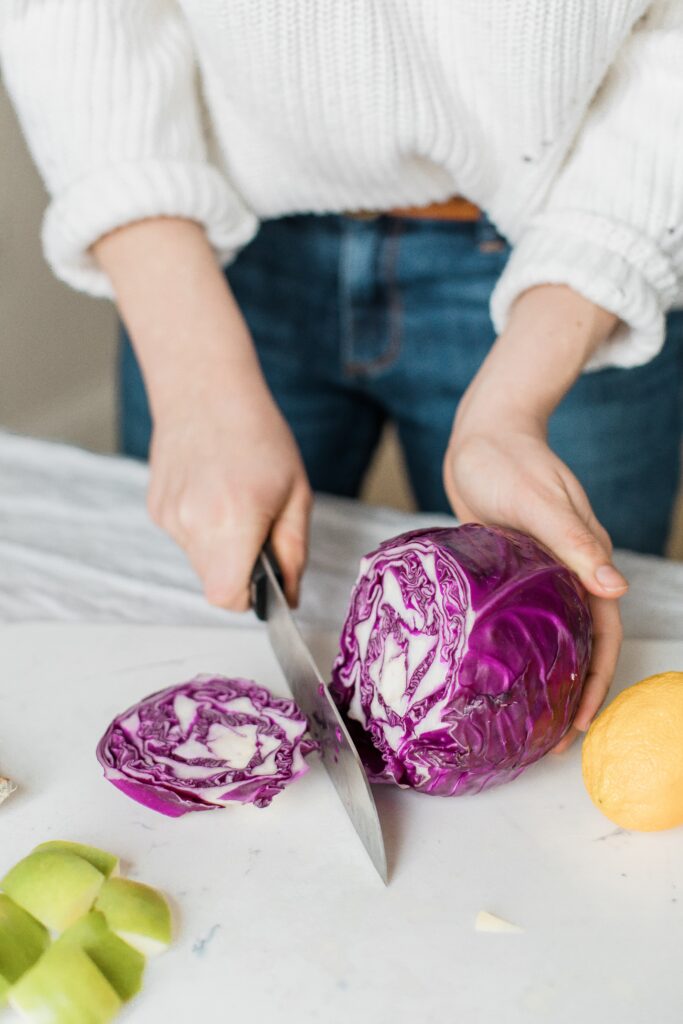
A new year can offer a blank slate and an opportunity to start fresh. Many people choose this time to set resolutions for the year and work towards achieving health and happiness. Unfortunately, this can also be a time where diets and weight-loss programs are promoted like crazy. If you’re moving away from dieting and seeking food freedom, read on to learn how to set non-diet intentions for a happy and healthy new year.
New Year, New You?
I’ve never been a fan of setting resolutions for the new year. It always felt like a lot of unnecessary pressure. But, it also felt like the popular thing to do, so for a few years I jumped on the bandwagon and tried it myself. I remember thinking I was doing something special by following some crazy diet or setting unrealistic exercise goals for myself.
The result? Nothing good or sustainable ever came out of these crazy efforts, and I usually felt like a failure pretty quickly.
Then I discovered that only about 9% of people successfully maintain their new year’s resolutions each year. And almost 25% of people give up within the first week of the new year!
This got me thinking – what’s the reason behind this? And, is there a better way to reflect and set goals each year?
Why New Year’s Resolutions Don’t Work
Interestingly, the top three resolutions that people make each year are health-focused. Specifically, they are:
- Diet
- Exercise more
- Lose weight
This is where the failure rate starts to make sense. As a certified Intuitive Eating counselor, I talk a lot about how a gentle, flexible approach to nutrition and health is most sustainable and can lead to best physical, mental, and emotional health outcomes. Not only is it unhealthy to try and manipulate your body size by dieting and exercising like crazy, it is also incredibly difficult to sustain.
See also: An Introduction to Intuitive Eating
New year’s resolutions are similar to dieting in that they are usually pretty rigid and intimidating. They’re not usually set with kindness or compassion towards oneself in mind. Instead, they may require a person to mentally or physically restrict food, or stress the body to achieve unsustainable results. Consider this: if a friend told you to try and lose 20 pounds in 30 days while eating hardly anything and madly exercising, would you think they were being kind? I hope not!
While resolutions may not be an effective strategy to creating positive and long-term changes, setting intentions is a gentler, more effective approach you could take to setting goals for this year.
Setting Intentions Vs. Resolutions
Intentions are similar to resolutions in that they both set out to create changes for the future. But, here are some major differences:
- Resolutions are more finite. They tend to be all-or-nothing, and often focus on removing something from a person’s life or routine. Psychology research has proven that when we focus on restricting or taking away, a rebellious or childlike reaction can follow. This is just one of many reasons why diets don’t work!
- Intentions allow space for “adding in” and progressing without rigidity. Intentions can help set direction to begin actions towards changes. They can help us create space for the things we desire in life.
- Success is defined differently with intentions. Resolutions tend to focus on checking off boxes. An example: exercising for 30 minutes every day, no matter what. Intentions, however, focus on trying to achieve a goal by aligning with your core values. An example of an intention is to move your body more regularly to reap the physical and mental benefits and generally feel better.
Can you see the difference? Intentions give you room to be a human – to learn, pivot and grow – as you work toward living in alignment with your values.
You can then work towards better health or happiness without stress or feelings of failure.
How To Set Non-Diet Intentions For The New Year
You can take the following steps to start setting your intentions for a happy, healthy new year:
-
- Take a moment to reflect on the previous year. Note if there was anything you’d like to see differently in this upcoming year to help you achieve goals that align with your values.
- Set your intention. It can help to write it down in a notebook or to keep a digital journal.
- Be sure to question your intention. This is a crucial step! Consider what is behind this intention you’re setting. Is it kindness? For example, will you be working towards moving your body more regularly because you know you’ll experience mental and physical benefits from it? Or is the intention set with cruelty or punishment behind it? For example, will you be trying to exercise to burn more calories to lose weight or make your body smaller? Be sure to note the difference!
- Schedule a time to review your intention. To allow an intention to shift into a change, you’ll need to check in on it regularly. This may help you determine what you may need to do to support this intention. Would a daily or weekly review of your intention work best for you? Make sure to be realistic so you don’t feel pressured.
- Lastly, consider what you will do to measure this intention. You’ll want to be able to assess if things are moving in the direction you intended. But, how? Numbers (like pounds on a scale) may not be available if you’re taking a non-diet approach, so what would help you see your progress?
- Take a moment to reflect on the previous year. Note if there was anything you’d like to see differently in this upcoming year to help you achieve goals that align with your values.
Setting intentions may be the key to navigating this new year with ease and confidence while you step towards your full potential. As you do this, remember what Intuitive Eating reminds us: that this is all about progress, never perfection. Hope you can enjoy the journey!
Want more support?
Find out if individual nutrition counseling is right for you by scheduling a free 15-minute call here.
You can also join our community by signing up for our monthly newsletter with strategies, tools, and lessons to help you thrive.



